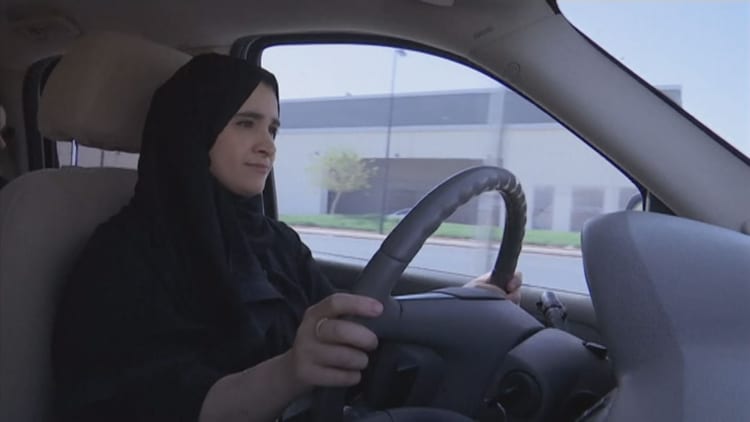
Riem Farahat couldn’t contain her smile as she took to the wheel, starting her new role as a ‘captainah’ for regional ride-hailing service Careem in Saudi Arabia’s capital Riyadh.
When asked by CNBC why she took up the job, she replied, “Why not? Because I can do it.”
Women across the ultra-conservative Saudi kingdom were able to drive for the first time Sunday, following Crown Prince Mohammed bin Salman’s announcement last year that the ban on female driving would be lifted.
The sea-change ruling is part of the country’s aim to open up its society and create economic opportunity as a part of its Vision 2030 program, with plans to diversify its economy away from oil reliance. So far, several thousand Saudi women have applied for driver’s licenses.
The Saudi government hopes this will bring billions of dollars into its economy and increase the currently meager volume of two-income households. Women make up only 22 percent of the Saudi workforce; the monarchy aims to up this to 30 percent by 2030.
But women in the Islamic kingdom still face severe restrictions in nearly every aspect of their lives — driving included. In order to apply for a license, a woman needs a male guardian’s permission; she also needs this in order to travel out of the country, to apply for a job, to marry, divorce and even access healthcare.
And activists from local women’s rights groups who pushed for lifting the ban are ironically being detained and could face long prison sentences for their advocacy. Dozens of women have been arrested since the 1990s for driving under the ban.
Critics say far more change will be needed to show real progress for gender rights in the country.
In the broader picture, repealing the female driving ban may represent a baby step. But for many Saudi women, it is still significant and represents the start of things to come.
“Saudi Arabia has come a long way, actually — right now, with the new Vision 2030 we have in place with his royal highness’s announcement two years ago, we’ve seen things accelerating significantly,” Salma Al-Sunaid, a new driver, told CNBC in Riyadh.

And growing companies see opportunity in this new segment of the market.
Careem co-founder Abdulla Elyas hopes to expand the ranks of his company’s drivers and see 20,000 female drivers, or “captainahs,” by 2030.
“We’ve seen 2,000 women already registering for trainings to become a captainah,” Elyas told CNBC’s Hadley Gamble in the capital. “Careem has a mission to increase the number of people who are having an income in our society.
“We are operating in 14 countries, and in all these countries women are driving. As for Saudi, we don’t have concerns, after a lot of women are able to buy cars, because it’s working perfectly well in other countries where women are allowed to drive,” the executive said.
“So, we are believing in a society which is becoming way more modern, and with that transportation it will increase.”


